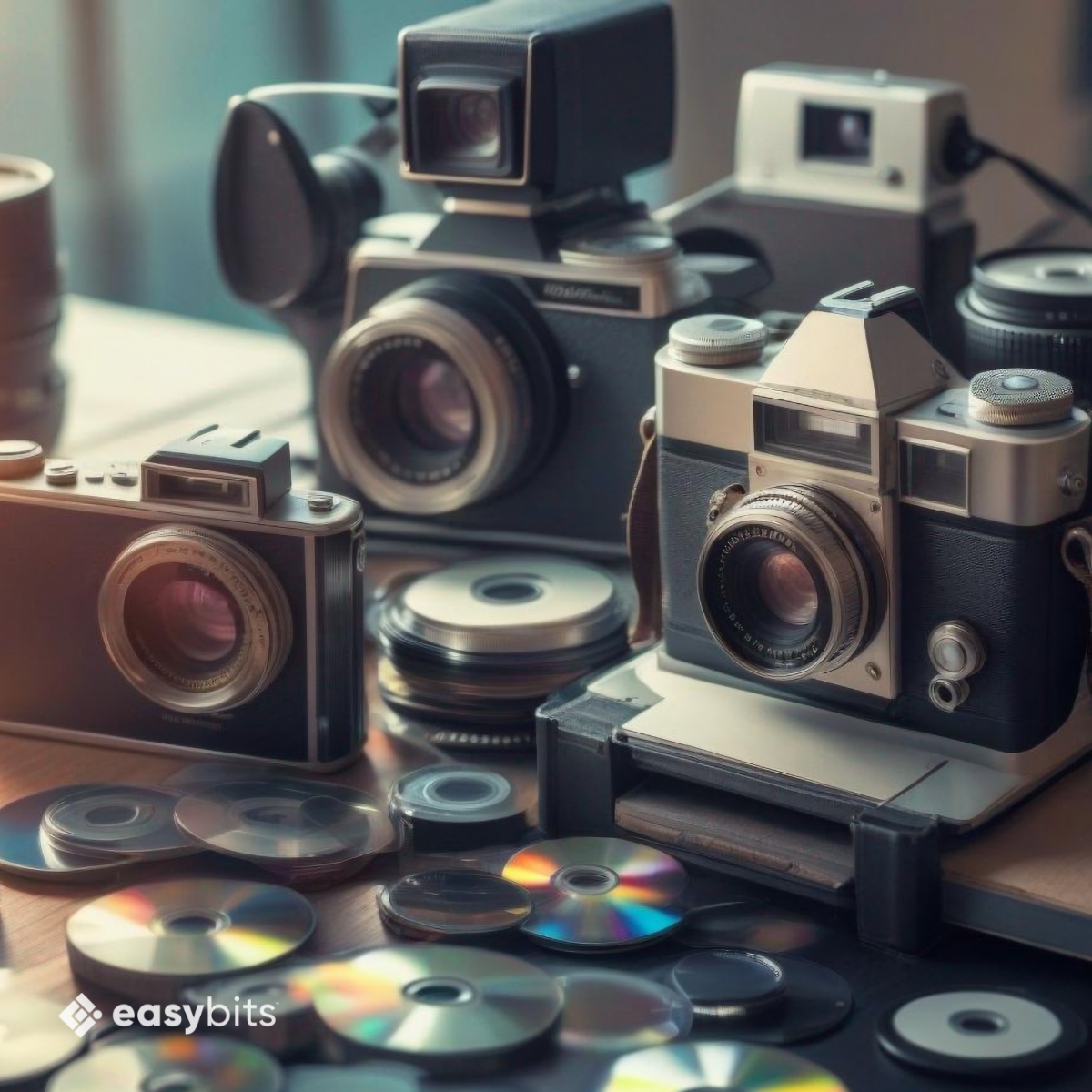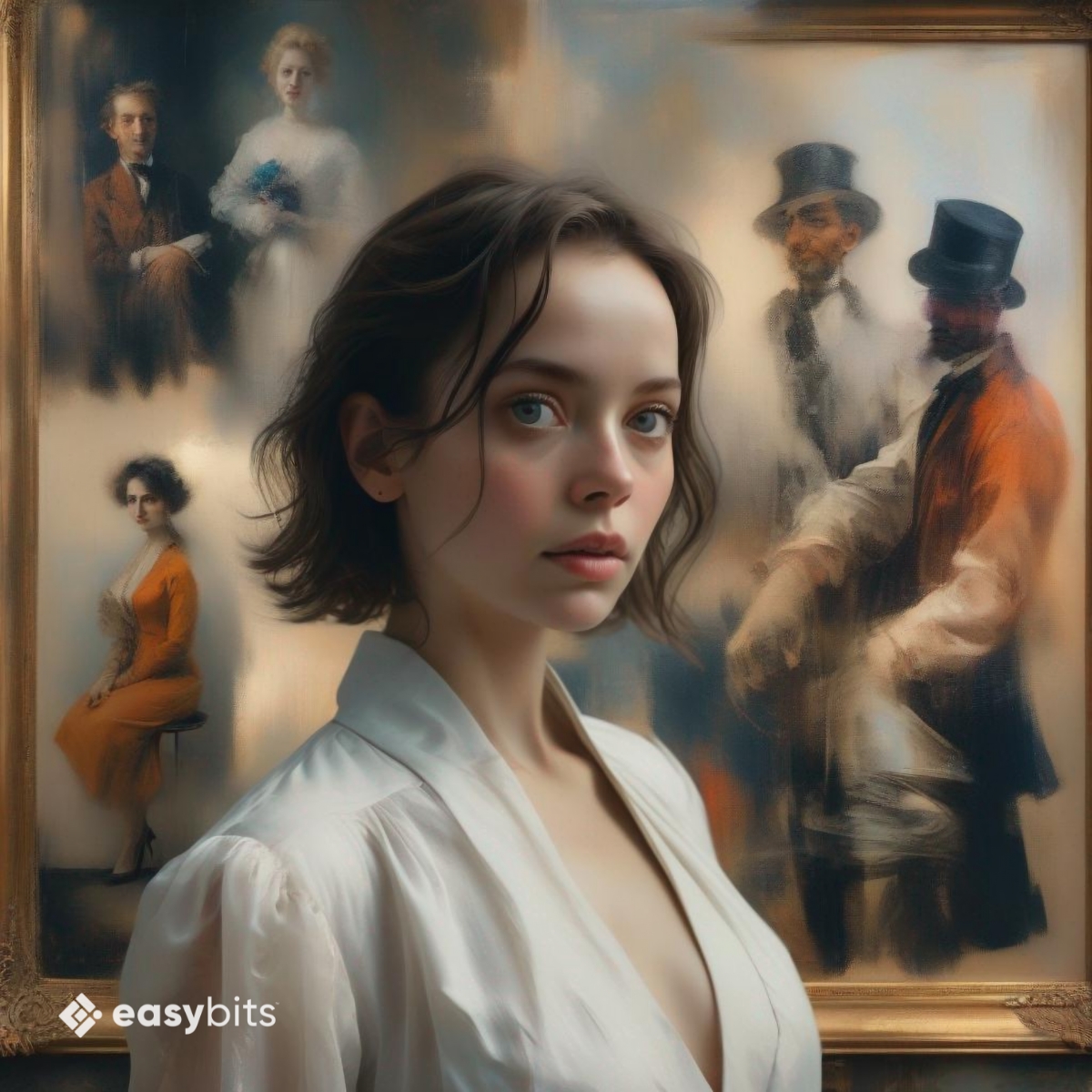The New Era of Stock Photography: Powered by AI

Generative AI is making waves across numerous industries, one of its standout uses being image generation, a field I regularly engage with through my work with easyface. The potential of generative AI to transform industries is especially fascinating, particularly within the stock photography sector, known for its ability to withstand disruptions. The integration of generative AI marks the latest chapter in the industry's ongoing evolution.
While some may claim that the rise of generative AI signals the death of the stock image industry, history tells a different story. Technology has always influenced this sector, and AI is simply the latest iteration. Instead of relying solely on stock libraries, AI now allows us to generate images based on precise prompts. This shift empowers creatives to channel their skills and inspirations directly into producing tailored, high-quality assets efficiently.
The shift from traditional stock photos to more prompt oriented solutions like easyface, a free image creation Telegram bot, reflects a growing demand for originality and personalization in visuals. What challenges do the stock solutions we have relied on for the past decade face, and how can generative AI help address them? Furthermore, let's explore the evolution of stock photography – how it originated and its ongoing growth—as we delve into this topic.
Stock Photography’s Evolution: From CD-ROMs to AI Innovation
Change is nothing new to the stock photography industry, the industry has consistently survived by evolving to reflect shifts in media consumption. Starting with physical collections like Otto Bettmann's archive, it transitioned into the digital realm with products like PhotoDisc, which began distributing images via CD-ROMs in the 1980s and 1990s. As technology advanced, the rise of online platforms such as Shutterstock and iStockphoto in the 2000s marked a new era.

The development of royalty-free websites like Unsplash, Pexels, and Pixabay further transformed the industry by providing high-quality images freely accessible worldwide. These platforms cater to the demand for diverse and readily available visual content, challenging the traditional constraints of stock photography.
The stock photography industry has shown remarkable resilience, continually adapting to remain relevant in the ever-evolving digital landscape. The global stock photo market is projected to grow at a CAGR of 7.8%, expanding from USD 6.8 billion in 2024 to USD 12.6 billion by 2033. This growth is driven by the increasing demand for visual content across various industries.
Key growth factors include:
- Expanding Visual Content Demand: With the rise in digital marketing and advertising, there is a higher demand for professionally curated visuals, boosting the stock photo market.
- Diverse Collections: Stock photo platforms cater to varied themes and industries with specialized collections, enhancing their utility.
- Technological Advancements: Innovations in AI and machine learning enhance image search capabilities, improving user experience and productivity.
- Global and Local Adaptation: Providers adapt content for different cultural preferences, helping them penetrate global markets.
- Integration with Digital Tools: Stock images integrate smoothly into digital tools and platforms, streamlining content creation processes.
Emerging trends such as the preference for authentic and user-generated content, the growth of e-commerce and digital advertising, and the emergence of video and motion graphics content are driving the industry. Despite worries about AI's effect on the stock photography field, it has consistently embraced new technologies and adapted its business models.
Era of AI in Stock Photography
AI-generated content marks the latest evolution in the stock photography industry, as it adapts to technological advancements and shapes the ongoing discussion about the impact of generative AI. While this transition brings challenges, including concerns over authenticity, it underscores the sector's continued resilience and its crucial role in visual content creation. Companies like Shutterstock and Getty Images have started to explore generative AI tools that can produce customized and on-demand images based on specific parameters set by users. For instance, a marketing agency can input desired traits such as "a sunny beach with a family playing" and receive an image that matches these criteria without needing a specific photo shoot. This method reduces the need for physical shoots, lowers costs, and increases the speed at which tailored content can be produced.
Want to learn how our text-to-image bot in Telegram, called easyface, can transform your branding efforts? Check out our blog article for detailed insights into its innovative capabilities.
Find out more!Stock Photography's Shift: From Peak to Decline Pre-AI Era
Over the past decade, the stock photography industry has changed in order to be where it is today, from its height to a notable decline before the advent of AI-driven platforms. Initially, stock photography was a critical resource for a diverse range of professionals, including designers, marketers, and content creators. It offered convenient access to an extensive collection of images suitable for various applications, from advertising campaigns to digital and print media.
This period marked a golden age for stock photography, where the demand for quick, ready-to-use images fueled the industry's growth. However, as digital technologies advanced and the ways in which content was created and consumed evolved, the industry faced new challenges. The rise of high-quality smartphone cameras and user-friendly photo editing software allowed even amateurs to create competitive images, reducing reliance on traditional stock libraries.
Social media platforms further accelerated this trend by popularizing user-generated content, which often felt more authentic and connected better with audiences compared to the sometimes staged and generic images found in stock photo libraries. Additionally, the afforementioned proliferation of free or low-cost image sources saturated the market, making it difficult for traditional providers to maintain their pricing models and market share.
These shifts required the stock photography industry to adapt drastically. The introduction of AI and machine learning technologies brought about a new era, enabling the creation of tailored, on-demand images that better meet the needs of today's digital landscape. This evolution reflects the industry's ongoing effort to align with modern content demands, emphasizing the necessity for innovation and flexibility in a rapidly changing market.

Today, the role of stock photography is being redefined, blending traditional elements with AI to provide visual content that is both impactful and relevant as the industry continues to serve as a vital tool for creatives and businesses.
Looking to revolutionize your branding with text-to-image models? Our blog article has all the details you need to get started.
Find out more!How AI will tackle the challenges stock photography is facing
As digital media continues to evolve, artificial intelligence has emerged as a powerful ally, ready to impact the industry by addressing existing challenges.
Generic Imagery
Challenge: Challenge: The search for the perfect stock image that fits a unique or niche project can be daunting. Generic images often fail to capture specific ideas or emotions, making content feel disconnected and cheap.
AI Solution: An AI model, when trained on diverse datasets and brand-specific assets, can produce images that effectively convey specific scenarios, emotions, or concepts, aligning closely with brand cues and avoiding the generic feel of traditional stock photography.
Inputing descriptive prompts like "a joyful family picnic in autumn." The system would then generate images that not only meet the specific request but also resonate with the intended ambiance and emotional tone. This capability demonstrates how AI can transform stock photography from a source of generic visuals into a provider of customized, relevant content.
Diversity Deficit
Challenge: Stock photography often struggles to represent a wide range of races, cultures, and lifestyles, risking audience alienation.
AI Solution: AI-driven platforms can offer a broader variety of images by using algorithms that prioritize diversity. Tools like DiverseUI, which generates diverse user avatars for designs, show how AI can enhance stock photography to include more inclusive imagery.
Quality and Authenticity
Challenge: Variability in photo quality and staged nature of images can detract from a brand's authenticity and professionalism.
AI Solution: AI can ensure consistent quality and authenticity by being trained with a brand’s specific images and styles. It can also generate new images that naturally blend with real-life settings, enhancing a brand's genuine presence.
Licensing Complexity
Challenge: Understanding stock photo licensing can be complicated, and not following the rules properly could cause legal problems.
AI Solution: AI can automate the detection and documentation of image usage, simplifying compliance with licensing terms. This could involve tracking where and how images are used, providing alerts for potential breaches before they escalate into legal issues.
Rising Costs
Challenge: High costs associated with sourcing quality stock photos or acquiring licenses can strain budgets.
AI Solution: AI-generated imagery can cut costs significantly by eliminating the need for traditional photo shoots and ongoing licensing fees, offering a more budget-friendly solution for quality visuals.
Visual Consistency
Challenge: Achieving a cohesive visual identity across various platforms and campaigns can be challenging due to stylistic variations in stock images.
AI Solution: AI can analyze and align the stylistic elements of images to ensure consistency across a brand’s visual content. This could include matching color schemes, lighting, and composition styles to create a unified brand image.
As AI continues to integrate into this field, it promises a future where visual content is more accessible, representative, and closely tailored to user requirements.
Curious about the legal complexities of AI art? Discover more in our blog article, where we explore the challenges facing artists and creators in this evolving landscape.
Find out more!Streamline Your Visual Content with easyface on Telegram and Slack
Tools like easyface are part of the evolving relationship within the stock photography industry, becoming useful for inspiring creatives who seek to produce unique works of art. The industry, known for its resilience through various consumer-driven cycles, has demonstrated its ability to adapt and grow alongside new technologies like AI.

Imagine a world where users input inspirational images into a model, which then generates unique visuals tailored to their brand needs. This can be an example of how the industry will evolve to provide value.
The transition to AI-generated content marks the latest evolution in the stock photography industry, helping fulfill the growing demand for diverse, authentic, and easily accessible media. easybits' integration with platforms like Telegram and Slack facilitates access to AI-powered image generation, showcasing the changing behaviour of how visuals are obtained and utilized to cater to the preferences of today's consumers.
Ready to unlock the potential of easyface? Simply search for it on Telegram or sign up at easybits.tech to start creating unique images.
Start creating!Bibliography
- Leffer, Lauren. "When It Comes to AI Models, Bigger Isn’t Always Better." Scientific American, November 21, 2023. Follow Lauren Leffer on X (formerly Twitter) @lauren_leffer and on Bluesky @laurenleffer.bsky.social.
- DelSignore, Paul. "Is This The End Of Stock Photography? Why Generative AI Will Eat The Stock Industry." Geek Culture, January 29, 2023 (Updated: February 7, 2023).
- Smith, Ernie. "A Seismic Stock Shift." Medium, June 17, 2023.
- Amaral, Fernando. "Generative AI and the End of Stock Photographers." Medium, April 27, 2023.
- Heap, Steven. "Artificial Intelligence – the End for Stock Photographers?" Medium, September 27, 2023.
- Cooke, Alex. "Is This the End of the Stock Photographer?" Fstoppers, December 7, 2022.
- Scott, Dr. Grant. "The Future of Stock Photography - How AI is Changing the Industry." United Nations of Photography, February 21, 2023.
- Custom Market Insights. "Stock Photo Market: Industry Analysis, Size, Share, Growth, Trends, and Forecast 2023-2028. Custom Market Insights. Accessible at: https://www.custommarketinsights.com/press-releases/stock-photo-market/
Check this video to find out more
